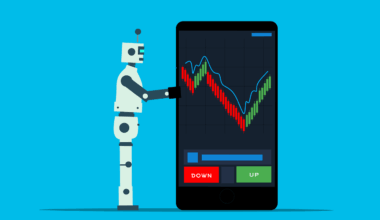Top Visual Strategies for Effective B2C Campaigns
B2C advertising techniques highly depend on visual strategies that genuinely engage customers. One effective approach is utilizing persuasive imagery that resonates with target audiences, leading them towards emotional engagement. Strong visuals can significantly influence consumer behavior, increasing the likelihood of conversions. Additionally, showcasing products in relatable contexts helps viewers envision them in their daily lives. For instance, using lifestyle photography places products in real-life scenarios, enhancing desirability. Moreover, consistent branding across visuals creates a unified brand identity, which is crucial for building trust. Various platforms offer distinctive visual opportunities such as Instagram, Pinterest, or Facebook, needing tailored strategies. A compelling visual hierarchy guides viewer attention through the advertisement, highlighting what matters most. Implementing color psychology can evoke certain emotions and prompt action; for instance, vibrant colors grab attention. Videos can also enhance engagement through storytelling and demonstrations, making the product more relatable. Brands should continually test visuals to discover what works best for their audience, ensuring to optimize each campaign without neglecting analytics. Focusing on these aspects positions B2C advertising efforts to be more effective and impactful across diverse audiences.
Creating Compelling Visual Content
Creating compelling visual content is crucial for successful B2C advertising. Effective visuals should tell a story while capturing the essence of the brand and its message. Therefore, it is essential to invest in high-quality images or graphics, as poor visuals can harm credibility. Using professional photography and engaging designs can differentiate a brand in a saturated market. Furthermore, incorporating user-generated content in advertisements can boost authenticity, engaging potential customers who trust peer recommendations. Encouraging fans to share their experiences on social media builds community and asset curation, allowing brands to showcase those shared moments. Animations and graphic designs can communicate complex ideas effectively while being visually appealing. In addition, infographics can present data in an easily digestible format that informs and engages audiences. It is also beneficial to consider the target audience when designing visuals, ensuring that they align with their preferences and lifestyle. Dynamic visuals are likely to capture attention as they stand out amidst the noise of static ads. Ultimately, prioritizing creativity will result in visually stimulating content that resonates deeply with consumers, driving engagement and loyalty for the brand.
In today’s digital age, optimizing visuals for mobile devices is crucial for B2C advertising success. With the increasing number of mobile users, content must render correctly across various screen sizes. Hence, adopting a responsive design ensures viewers experience the intended visual appeal regardless of their device. Short-form videos, eye-catching images, and engaging graphics are vital for mobile-first strategies. Using platforms like Instagram or TikTok allows brands to create content tailored explicitly for mobile audiences, featuring user-friendly approaches. Additionally, visuals must load quickly to mitigate user frustration and dropout rates. Utilizing compression tools can effectively reduce file sizes without sacrificing quality. Moreover, visually appealing thumbnails can pique interest and encourage clicks; thus, investing effort into designing compelling thumbnail images is vital. Consistency across channels should also be accounted for, ensuring the same tone carries over from mobile to desktop experiences. Visuals that encourage interaction and participation can significantly enhance engagement rates, utilizing stickers, polls, or calls-to-action strategically placed within the content. Adapting to the mobile-first culture empowers brands to effectively connect with consumers in a personal and substantial manner.
Leveraging User-Generated Content
User-generated content (UGC) plays an essential role in enhancing B2C advertising effectiveness. By integrating customer-created visuals into marketing strategies, brands enhance their authenticity and credibility. UGC provides social proof, as potential customers perceive others’ reviews and photos as genuine testimonials. Various methods exist for incorporating UGC into campaigns, such as hosting contests and encouraging consumers to share experiences on social media platforms. Utilizing branded hashtags connects with target audiences, building community and creating a shared brand narrative. Furthermore, brands can feature customers on websites or social media channels, showcasing the diversity of their customer base while promoting engagement. It is essential to seek permission before using UGC, fostering a sense of trust and respect between brand and consumer. Providing incentives for contributions can also motivate customers to share their content. Videos showcasing customer experiences contribute to storytelling and enhance emotional connections with potential buyers. When executed thoughtfully, UGC not only strengthens brand loyalty but serves as an effective marketing technique to attract new customers through engaging, authentic visuals.
Incorporating interactive elements within B2C advertising visuals can significantly boost engagement levels. Interactive content prompts viewers to participate actively, providing a deeper connection to the brand. Tools such as quizzes, polls, or clickable infographics capture attention, fostering a sense of involvement. Studies show that interactive visuals can enhance information retention, reinforcing brand messaging and increasing the likelihood of conversions. For instance, brands can create gamified experiences related to their products, encouraging consumer interaction while showcasing features in an entertaining format. Additionally, offering augmented reality (AR) experiences can allow potential buyers to visualize products in real environments. This immersive experience reduces uncertainty and encourages purchasing decisions, as customers can see how the products fit into their lives. Moreover, storytelling through interactive micro-sites can elevate user experience, facilitating exploration of different brand aspects. Consumers today seek engagement over passive consumption, making interactive visuals a valuable asset. Ensuring compatibility across devices and platforms is vital to maximizing reach and effectiveness. Ultimately, by investing in interactive visual strategies, brands solidify relationships with customers and increase overall campaign effectiveness.
Measuring Visual Advertising Effectiveness
Measuring the effectiveness of visual advertising strategies is crucial for brands aiming to optimize their B2C campaigns continually. Many key performance indicators (KPIs) can evaluate visual content performance, providing insights for improvement. One common metric is the click-through rate (CTR), indicating how many viewers engage with the ad. Analyzing engagement metrics, like shares, comments, and likes, reveals how well visuals resonate with audiences. Conducting A/B tests between different visual elements can help determine which designs perform better, guiding creative decisions. Furthermore, tracking conversion rates helps assess how visuals contribute to sales or lead generation. Utilizing analytics tools provides valuable data on audience behavior, enhancing understanding of what works and what doesn’t. Brands should also consider feedback and insights gathered from consumer interactions for deeper understanding. Surveys can gauge emotional responses to visuals, offering qualitative data alongside quantitative metrics. Implementing improvements based on findings can increase visual advertising effectiveness. Regularly evaluating performance enables brands to adapt and achieve better results, ensuring that B2C advertising efforts yield a positive return on investment (ROI). Establishing a culture of continuous testing and optimization will empower brands to maintain relevance.
In conclusion, effective visual strategies are essential to drive B2C advertising success. Brands must prioritize creating high-quality visuals that authentically engage and resonate with target audiences. By leveraging user-generated content and incorporating interactive elements, marketers enhance consumer experiences that foster lasting relationships. Additionally, focusing on mobile optimization ensures that campaigns reach the growing audience of smartphone users effectively. Measuring visual advertising effectiveness through KPIs allows marketers to continually refine their strategies for enhanced performance. Brands should remain flexible and adaptable as consumer preferences evolve, embracing creative and innovative approaches to visual advertising. Consistent branding across all platforms increases trust while strong visuals can significantly influence purchasing decisions. Furthermore, combining storytelling with compelling designs creates memorable campaigns that differentiate brands in the competitive landscape. Ultimately, investing time and resources into effective visual strategies elevates B2C advertising endeavors, turning casual viewers into loyal customers. As digital landscapes constantly shift, it is crucial to stay informed about emerging trends and techniques that can further enhance visual advertising. By adhering to these principles, brands will position themselves for sustained growth and long-term success.


